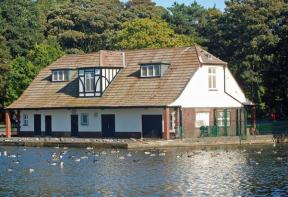Build a better boathouse
Consider your impact on the shoreline when you build a nautical garage
Some boathouses are plain and humble, while others are adorned and dressed to the nines, fulfilling the whimsy of their owners. Often, the character of the shoreline or the size of the body of water is a factor in determining a boathouse’s style. Shallow rivers, for instance, generally call for smaller craft, which require only a modest shelter; big, open lakes call for brawnier boats with boathouses to match. But before you build a dream boathouse, you need a solid plan. First, choose the basic construction elements that will make up your structure, then consider the impact the design will have on your shoreline, as well as the impact to the other inhabitants sharing the lake or river.
A boathouse requires more thought and planning than a dock. It faces more stress from the force of the wind. A boathouse is heavier than a dock, so the crib (the wooden foundation) may be more inclined to sink, and while a sinking dock has its ups and downs, a sinking boathouse brings an unwelcome twist to the building’s walls and roof.
A floating boathouse may have merit where the bottom is sinkingly soft, or where seasonal changes in water levels may see a boat lifted roofward during some parts of the year and lowered toward the bottom at others. However, if you plan to lift the boat in its house for the winter, the solid platform of a crib foundation is more practical. Consider the amount of extra buoyancy needed to lift your craft in a floating boathouse.
Cantilevered docks and boathouses have the least effect on aquatic habitats because they don’t disturb the bottom or interrupt shoreline currents. Floating structures are the next best choice, as they don’t disturb the bottom habitat. (Permits for these two types are less difficult to get.) The merits of each should be weighed against the overall impact on the aquatic and onshore environments. However, there are locations and situations where crib bases for structures are the only practical solution.
“Where possible, the best sites for cribs, or any structure, is where there is a sand or bedrock bottom. Keep the crib offshore as far as possible, a minimum of 2 m, to let water flow along the shore,” says Andy Smith, fish habitat biologist with Fisheries and Oceans Canada in Prescott, Ont. (You can use a ramp to bridge the gap to shore.)
To leave a comment, please log in












No comments